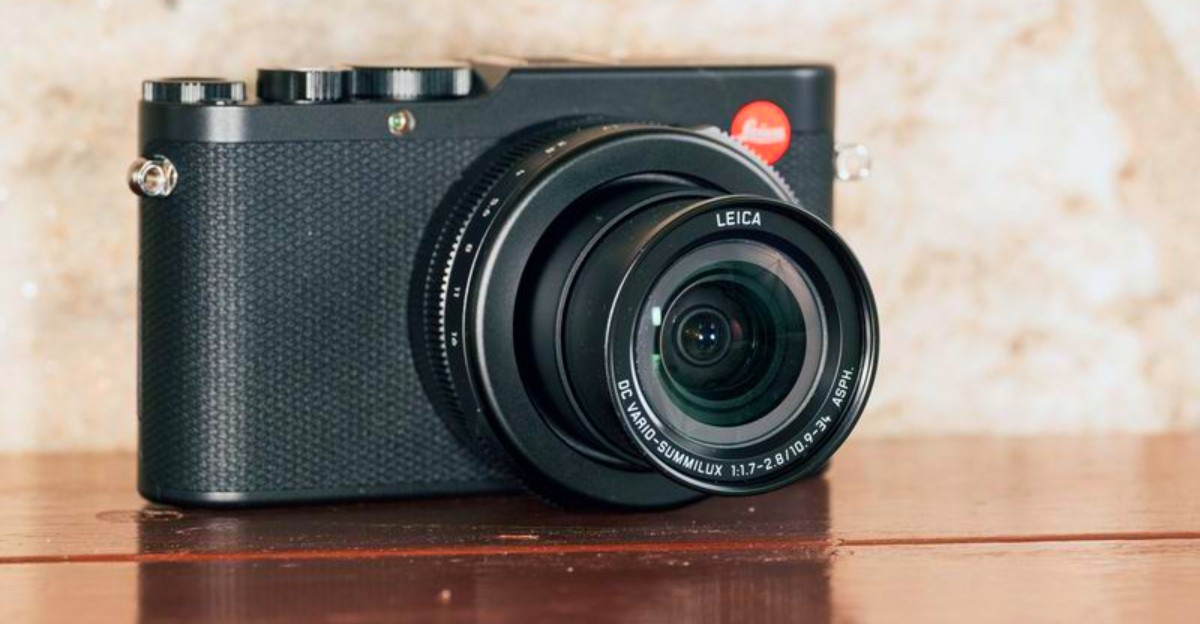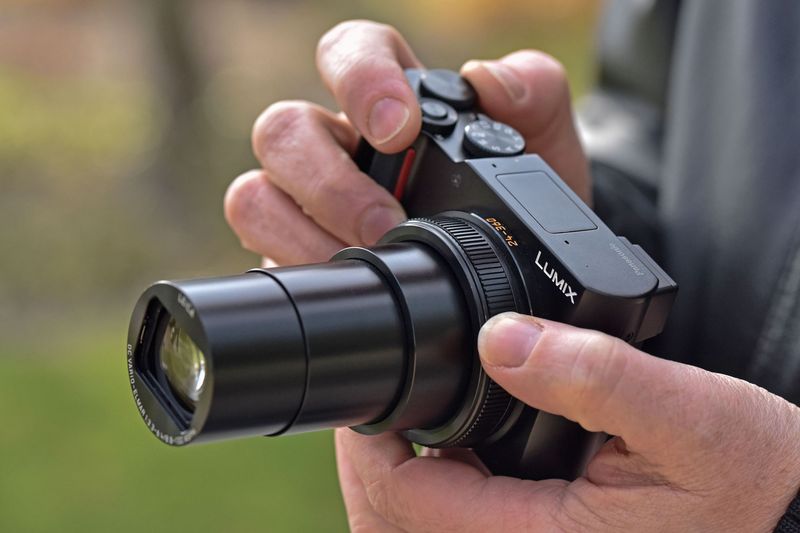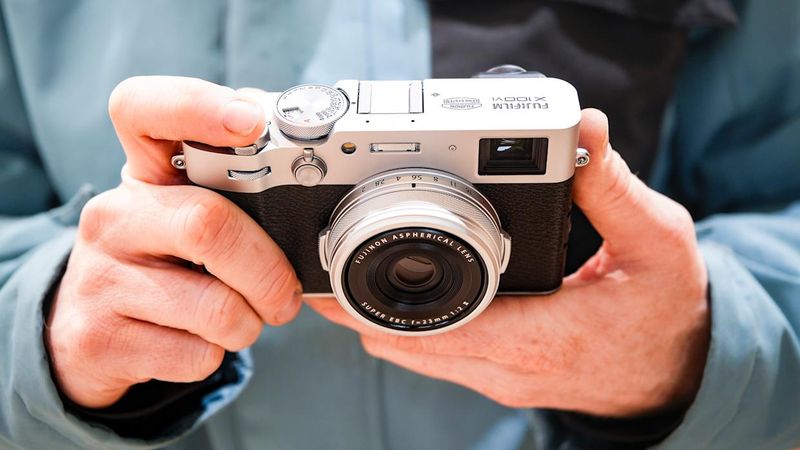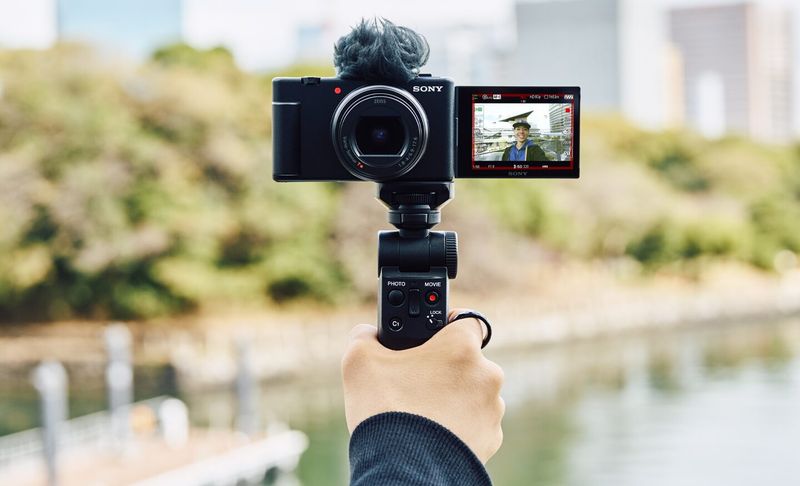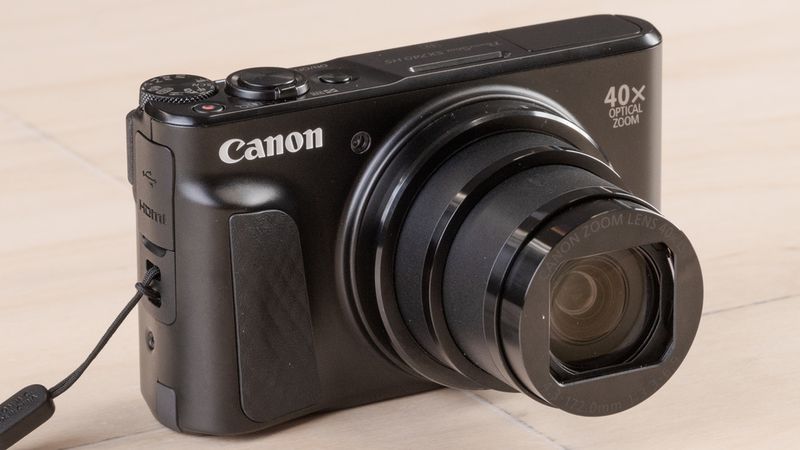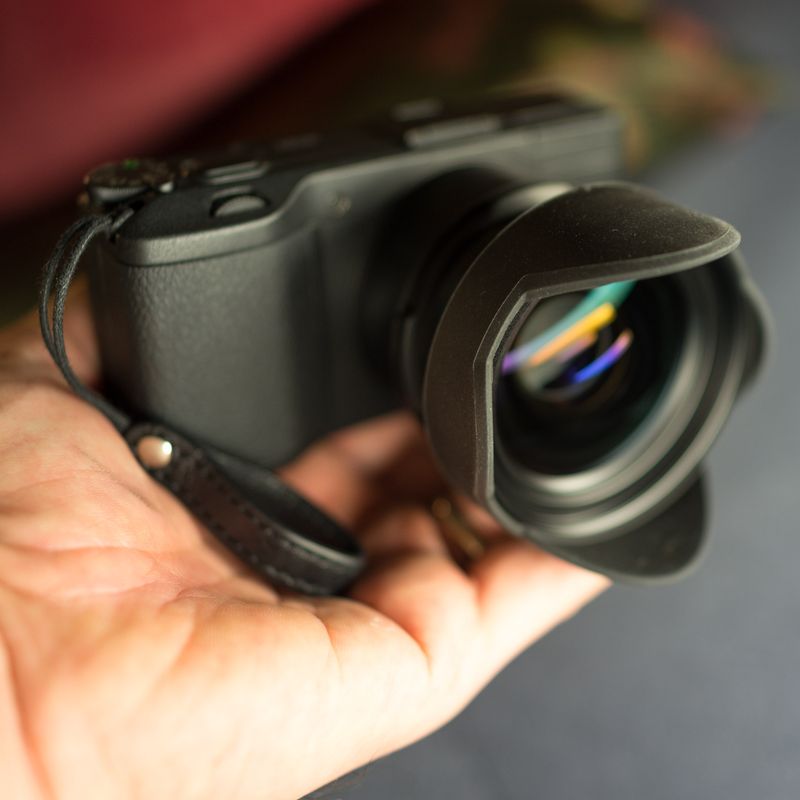Chasing summits demands a camera that won’t weigh you down yet delivers images worthy of the view. In 2025, compact cameras pack pro-level sensors, rugged builds, and clever video tools into trail-friendly bodies. Whether you prioritize reach, low-light mastery, or bombproof durability, the right pick can transform every ascent into a story. Read on to find the perfect lightweight companion for your alpine adventures.
1. Sony RX100 VII
The Sony RX100 VII blends pocketable size with pro-caliber performance for high-altitude days. Its 1-inch sensor and 24–200mm equivalent zoom deliver crisp landscapes and useful reach for distant ridgelines. Real-time tracking autofocus locks onto moving subjects, while 4K video captures dynamic weather shifts. At just about 302 grams, you’ll barely notice it on steep switchbacks. The pop-up EVF helps compose shots in harsh glare, and reliable stabilization tames windy exposures. Battery life is decent for a compact, and USB charging simplifies hut-to-hut travel. For hikers wanting versatility without bulk, this camera is a dependable summit partner.
2. Canon PowerShot G7 X Mark III
The Canon PowerShot G7 X Mark III shines for hikers who value simplicity and sharp results. Its 1-inch sensor and bright lens produce vivid images in dawn or dusk light across alpine valleys. 4K video and live streaming add creative flexibility for trail journals or quick updates from huts. The compact body slips into a chest pocket, and intuitive controls make on-the-go shooting effortless. Reliable stabilization assists handheld shots during gusty moments. USB charging supports power bank top-ups on multi-day routes. For hikers seeking a friendly interface with strong image quality, this compact hits a sweet spot.
3. Ricoh GR IIIx
The Ricoh GR IIIx is a minimalist’s dream for alpine travel. Its 26MP APS-C sensor delivers remarkable detail and dynamic range in a coat-pocket body. The 40mm-equivalent prime encourages thoughtful compositions, perfect for intimate summit scenes and trail narratives. Quick startup and snap focus help nail fleeting light windows. At roughly 262 grams, it’s featherlight for long days above treeline. In-body stabilization aids low-light handheld shots in huts or forests. The understated design attracts little attention, ideal for discreet shooting in mountain towns. For hikers who favor prime-lens purity and superb image quality, the GR IIIx excels.
4. Panasonic Lumix ZS200 (TZ200)
The Panasonic Lumix ZS200 packs a versatile 24–360mm equivalent zoom for broad alpine storytelling. Capture sweeping panoramas, mid-distance ridgelines, and distant wildlife without swapping gear. Its 1-inch sensor produces detailed files, while 4K Photo mode lets you pull crisp stills from action bursts. Despite its reach, the camera remains jacket-pocket friendly at about 340 grams. Simple menus and a useful EVF aid composition in bright snow glare. Stabilization helps at longer focal lengths when winds pick up. For hikers seeking a do-it-all compact with serious zoom, the ZS200 delivers practical range and dependable performance.
5. Olympus Tough TG-7
The Olympus Tough TG-7 is built for the harshest alpine weather. Waterproof, shockproof, and freezeproof, it shrugs off sleet, hail, and surprise dips in glacial creeks. While its smaller sensor can’t match 1-inch rivals, the macro system reveals delicate alpine flowers and icy textures beautifully. The fast lens and robust sealing inspire confidence on scrambles. Action-oriented modes and RAW support increase creative control. GPS and sensors enhance trip logs for later storytelling. At roughly 249 grams, it’s a worry-free companion on technical terrain. If durability tops your list, the TG-7 earns a spot on every summit push.
6. Fujifilm X100VI
The Fujifilm X100VI elevates alpine storytelling with a 40MP APS-C sensor and the beloved 35mm-equivalent lens. Its in-body stabilization and film simulations create evocative scenes from blue-hour ridges to sunlit glaciers. The hybrid OVF/EVF helps compose quickly in changing light and glare. Though slightly larger than pocket compacts, it remains trail-manageable and balances beautifully in hand. 6.2K/4K video adds cinematic options for trip films. Weather resistance with the adapter improves resilience against mountain mist. For hikers who prioritize characterful images and tactile controls, the X100VI blends artistry with dependable performance at altitude.
7. Sony ZV-1 II
The Sony ZV-1 II is a creator-friendly compact that thrives on the trail. Its wider 18–50mm equivalent zoom suits immersive vistas and trail diaries, while fast autofocus locks onto faces during moving pieces-to-camera. Excellent microphones with wind reduction capture cleaner audio on ridgelines. Background defocus and S-Log profiles expand creative control. It’s lightweight, pocketable, and USB-C chargeable for multi-day treks. Though reach is limited, pairing with digital zoom and active stabilization keeps footage steady. For hikers documenting journeys with engaging video and quick social edits, the ZV-1 II offers streamlined tools in a tiny package.
8. Canon PowerShot SX740 HS
The Canon PowerShot SX740 HS delivers huge reach in a small body for spotting chamois or distant climbers. Its 40x optical zoom (24–960mm equivalent) makes far-off details accessible, while stabilization helps manage long-lens shake in alpine winds. 4K video and fast burst rates capture fleeting cloud breaks. Though the 1/2.3-inch sensor trails larger rivals in low light, careful technique yields solid results. It’s budget-friendly, lightweight, and easy to use, ideal for casual hikers wanting flexibility without the cost of premium compacts. For daylight vistas and wildlife at range, the SX740 HS earns its place in your pack.
9. Panasonic Lumix LX100 II
The Panasonic LX100 II pairs a large Micro Four Thirds sensor with a fast 24–75mm equivalent lens, making it a stellar low-light alpine option. Its tactile shutter and aperture rings enable quick adjustments with gloves. The bright lens creates crisp, contrasty images at dawn and dusk. While not pocket-small, it’s compact enough for summit bids and offers excellent image quality. 4K Photo features add creative flexibility for action sequences. The EVF helps with glare on snowfields. For hikers craving a fast zoom and larger sensor in a refined body, the LX100 II remains a compelling classic.
10. Leica D-Lux 8
The Leica D-Lux 8 brings premium ergonomics and a Micro Four Thirds sensor to a travel-friendly body. Its fast zoom handles landscapes, villages, and trail portraits with crisp rendering and pleasing color. The controls are intuitive, encouraging quick exposure adjustments in shifting mountain light. Lightweight yet solid, it’s comfortable for long days. USB-C charging supports power banks between huts. While pricier than rivals, build quality and color science appeal to discerning hikers. The EVF combats glare on snow. For those seeking refined handling and excellent optics in a compact form, the D-Lux 8 is a polished choice.
11. Ricoh GR III (Wide Angle Converter)
The Ricoh GR III with the GW-4 wide-angle converter turns this pocket APS-C into a sweeping landscape tool. Its 28mm-equivalent field of view expands to an ultrawide perspective, perfect for grand cirques and glacier basins. Image quality remains excellent, with sharp detail and subtle color. The camera’s snap focus and responsive controls make seizing brief light effortless. IBIS steadies handheld shots during gusts. Compact, discreet, and light, it barely impacts pack weight. If you value prime-lens clarity but want broader vistas without bulk, this combo offers an elegant, trail-ready solution for serious hikers and minimalist photographers.
